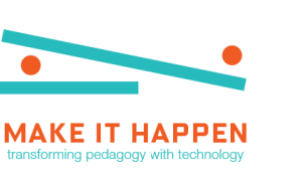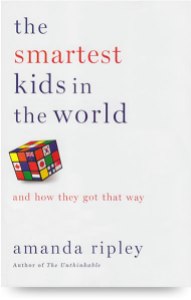The 2015 CES (Consumer Electronics Show) again unveiled new tech and new products that promise to revolution our lives. According to Jason Griffey, big items this year were robotics, 3D printing, drones, and the internet of things. Check out his unveiled video below:
All posts by John
School Librarians Spending Their Own Money
 Did you know 97 percent of school librarians pay for school items with their own money? On average, in the last 12 months, middle and junior high school librarians used $423 of their own funds! These numbers come from a recent School Library Journal poll of 353 respondents.
Did you know 97 percent of school librarians pay for school items with their own money? On average, in the last 12 months, middle and junior high school librarians used $423 of their own funds! These numbers come from a recent School Library Journal poll of 353 respondents.
The article shares many statistics about school librarians spending their own money at school. Where does the money go? The top three categories: books, office supplies, and prizes and giveaways.
Within the article, DonorsChoose.org receives mention and how it’s becoming another venue for educators to find money for their media center. Recently, CMLE wrote about DonorsChoose.org and its impact for educators.
Do you spend your own money at your media center or library? Why or why not?
Image credit: http://tinyurl.com/o4onocb, licensed under CC BY-SA 2.0
TIES 2014: A CMLE Scholarship
 The following post was submitted by CMLE scholarship recipient Brad Scherer, Instructional Technology Specialist at Sartell Middle School.
The following post was submitted by CMLE scholarship recipient Brad Scherer, Instructional Technology Specialist at Sartell Middle School.
“Because of the CMLE Scholarship, I was able to get another day and night at the 2014 TIES conference. This conference is always one of the premiere educational technology conferences in the Midwest. The keynote speakers, sessions, networking, and ideas are never in short supply. I always leave the conference more enlightened than when I arrived and this year was no different.
I have three major takeaways from the conference. The first is that I need to try and utilize our Learning Management System (LMS), Schoology, more. The “Student Completion” feature that allows students to progress through content at their own pace could be a game-changer. I was really inspired by a session I attended by Beth Hamilton a math teachers from Farmington Public Schools. Letting students work through material at their own pace as they learn it and not at the pace the teachers sets, seems to make so much sense. Schoology’s Student Completion makes this so much easier for teachers.
My second takeaway is that I really need to explore using Minecraft in the classroom. It is a platform that my students are already using and it has incredible potential for education. My plan is to explore the Minecraft Pocket Edition for our iPads this year and see if I can pilot using it in a few classrooms next year. I would like help teacher created content for specific curriculum and then for a unit or two we could have the students create content as a final assessment.
My third and final takeaway is how we need to continue to work on our MakerSpace (we call it our Learning Lab) at SMS. The Maker Movement was all over the TIES conference and I it got me motivated to continue to explore what is possible. I plan to invest in the book “Invent to Learn” a must read for people who want to create Maker Spaces. Thanks again for supporting my trip to TIES!”
Featured Book: The Smartest Kids in the World
 This post is part of an original series created by librarians/media specialists across Central Minnesota featuring books.
This post is part of an original series created by librarians/media specialists across Central Minnesota featuring books.
Title: The Smartest Kids in the World: And How They Got That Way by Amanda Ripley.
Reviewed by: Maria Burnham, Media Specialist at Sauk Rapids-Rice High School
Before this book, I hadn’t read a book about education in a while, and I’m always curious to read about how other countries/places run their educational system.
Although I wasn’t a big fan of the jumpy nature of the narrative, I did find the content, findings and students to be fascinating. Amanda Ripley interviewed and studied the educational system of three countries (Finland, Poland, and South Korea) all the while working with three American students who traveled abroad to these places for a year of schooling.
Much of the findings were quite interesting. For example, many South Korean students are sleeping all day during their public school classes because they are up so late studying in their hagwons in the evening. But perhaps the most interesting part of the whole story is the view on standardized testing. Ripley chose these regions because they typically score well on a nation-wide standardized test that ask students to answer questions using critical thinking skills, not necessarily just an application of a math formula or reading comprehension.
My absolute favorite part of the book, however, was the first appendices that talked about what all of this means for us, here in the United States.
This is a pretty quick read, which I can’t always say for a book that’s in my professional collection of my library:)
CMLE Book List: Reluctant Readers
Have more reluctant reader book suggestions? Add them to the list below!
